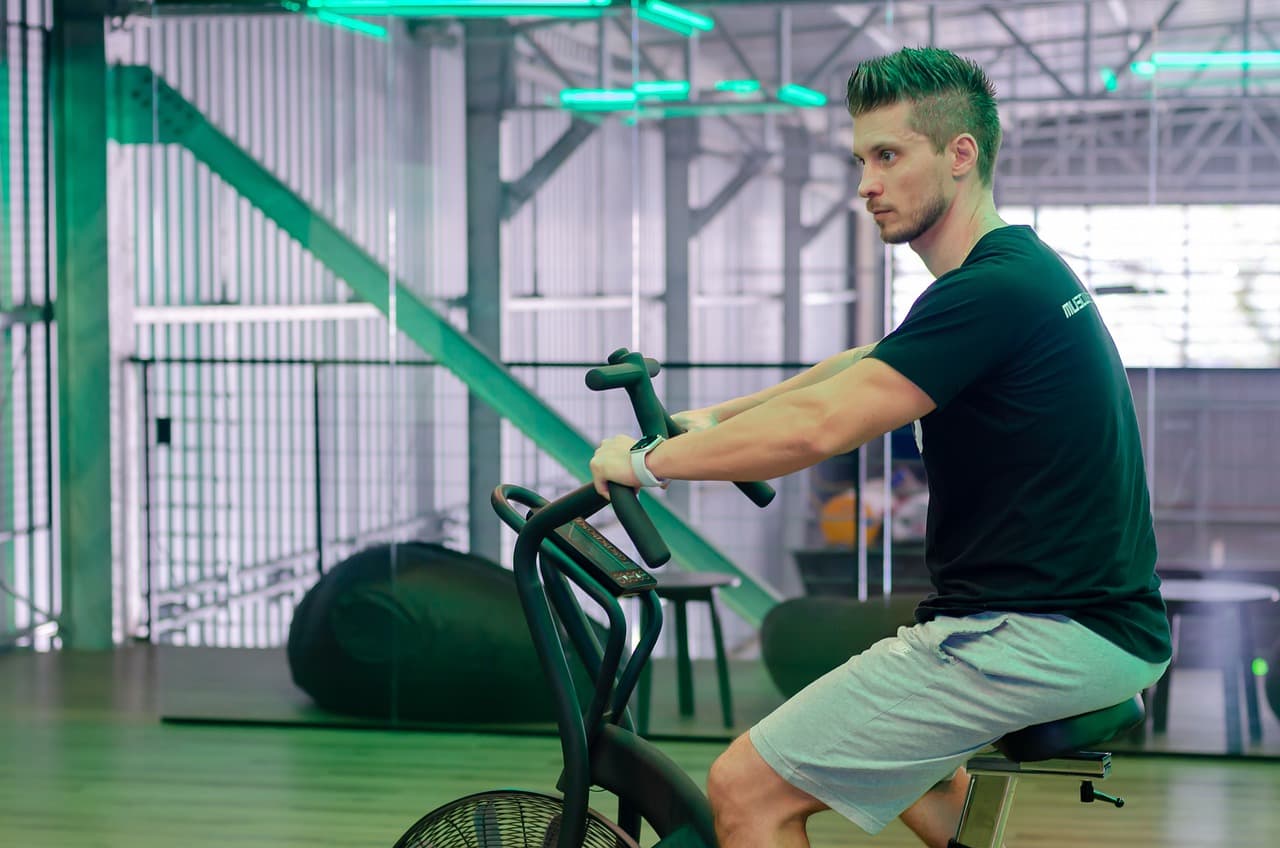Introduction to Exercise Bike Pedals
Are you ready to pedal your way to fitness glory? Whether you’re a seasoned cyclist or just getting started on your fitness journey, choosing the right exercise bike pedals is crucial for maximizing your workouts. These often overlooked accessories can make all the difference in comfort, efficiency, and overall performance.
Types of Exercise Bike Pedals
There are several types of exercise bike pedals to choose from. Each type offers unique features and benefits, so it’s essential to understand the options available before deciding.
One common type of pedal is the toe clip pedal, also known as the cage pedal. These feature a strap or “cage” that secures your foot in place while cycling. Toe clip pedals provide added stability and allow you to use more power when pedaling.
Another popular option is the platform pedal. As the name suggests, these pedals offer a flat surface for your feet to rest on. Platform pedals are versatile and suitable for all cycling workouts, including high-intensity interval training (HIIT) sessions.
For those looking for a more advanced option, clipless pedals may be the way to go. Unlike toe clip or platform pedals, clipless pedals require special cycling shoes with cleats that attach directly to the pedal mechanism. This design allows for greater efficiency and power transfer during each stroke.
Hybrid models combining elements from different exercise bike pedals are also available. These hybrids often feature one side with a toe clip or cage and another with a platform or SPD-compatible mechanism.
The choice between exercise bike pedal types depends on personal preference and specific fitness goals. Consider factors such as comfort, stability, power transfer efficiency, ease of use, and compatibility with your preferred workout style.
Factors to Consider When Choosing Exercise Bike Pedals
When it comes to choosing exercise bike pedals, there are several factors you should consider to ensure that they meet your specific needs and preferences. First and foremost, you need to consider the type of pedal system you prefer. There are two main types: clipless foot lever and toe cage foot lever.
Clipless foot levers require special cycling shoes with cleats that attach directly to the pedal. This allows for a secure connection between your foot and the pedal, maximizing power transfer and efficiency. On the other hand, toe cage foot levers have adjustable straps that hold your feet in place without requiring specialized footwear. These are great for beginners or those who prefer more versatility.
Another critical factor is adjustability. Look for a foot lever with adjustable tension settings to customize the resistance level according to your fitness goals and ability level.
Additionally, consider the size of the pedal platform. A larger platform provides stability and support, especially during intense workouts or longer rides.
Durability is also crucial – choose an exercise bike foot lever made from high-quality materials such as stainless steel or aluminum alloy that can withstand regular use without wearing out quickly.
Don’t forget about comfort! Look for features like padded surfaces or ergonomic designs that reduce pressure points on your feet during long rides.
Benefits of Using the Right Pedals for Your Fitness Goals
When achieving your fitness goals, using the right foot lever on your exercise bike can make a significant difference. Not only do they provide stability and comfort during your workouts, but they also help target specific muscle groups and improve overall performance.
One of the significant benefits of using the right foot lever is improved efficiency. Different pedal styles offer varying resistance levels and allow you to customize your workout intensity. If you want to increase endurance or build strength, choosing the appropriate foot lever can help you achieve those goals more effectively.
Another advantage is enhanced safety. The right foot lever ensures a secure grip for your feet, reducing the risk of slippage or accidents during intense cycling sessions. This adds extra confidence, allowing you to push yourself without worrying about losing control.
Proper exercise bike foot levers can also prevent strain or injury by promoting correct biomechanics. Foot levers with adjustable straps or clip-in systems align your feet properly throughout each revolution, minimizing stress on joints and muscles.
Additionally, selecting the right foot lever offers versatility in training options. Some models are specifically designed for spinning classes or high-intensity interval training (HIIT), while others cater to long-distance cyclists who prefer road-like conditions indoors.
Investing in quality exercise bike foot levers can enhance overall comfort during prolonged workouts. Ergonomically designed options reduce pressure points on your feet and distribute weight evenly across the pedal surface for a smoother ride.
Choosing the appropriate exercise bike foot lever has numerous benefits that directly contribute to achieving optimal results in your fitness journey – from increased efficiency and safety to improved biomechanics and versatility in training options.
Top-Rated Exercise Bike Pedals on the Market
When it comes to choosing exercise bike pedals, there are many options available on the market. To help you make an informed decision, we have compiled a list of top-rated exercise bike foot levers that can elevate your indoor cycling experience.
1. Shimano PD-M520 Pedals: These clipless foot levers offer excellent power transfer and stability. They feature adjustable tension settings, making them suitable for beginners and experienced cyclists.
2. Crankbrothers Candy 7-foot lever: Known for their durability and versatility, these mountain bike foot levers provide a comprehensive platform for optimal foot support. The four-sided entry system ensures easy engagement and release.
3. Look Keo Classic 3 Plus Pedals: These road bike foot levers offer a lightweight design without compromising performance. Large contact areas and adjustable tension settings provide a secure connection between your foot and the pedal.
4. Speedplay Zero Stainless Steel Road Pedals: These high-end road foot levers are worth considering if you value low stack height and exceptional cornering clearance. Their unique dual-sided entry system allows quick engagement from any angle.
5. Wellgo WPD-E003 SPD Compatible Spin Bike Pedals: Explicitly designed for spin bikes, these affordable foot levers provide compatibility with SPD cleats while offering reliable performance during intense workouts.
Consider your cycling goals, shoe compatibility, and budget when selecting an exercise bike foot lever that suits your needs.
Tips for Proper Use and Maintenance of Exercise Bike Pedals
Proper use and maintenance of exercise bike foot levers are crucial for ensuring their longevity and optimal performance. Some important things to keep in mind are as follows:
1. Adjust the pedal straps: Before hopping on your exercise bike, adjust the pedal straps to secure your feet properly. This will not only provide stability but also prevent any potential injuries.
2. Clean regularly: Sweat can accumulate on the foot lever during intense workouts, leading to a buildup of dirt and grime. Wipe them down after each session with a damp cloth or mild cleaning solution to maintain hygiene and prevent corrosion.
3. Lubricate moving parts: Over time, the moving parts of your exercise bike foot lever may start squeaking or become stiff due to lack of lubrication. Apply a small amount of silicone-based lubricant on pivot points and bearings periodically to ensure smooth operation.
4. Check for loose screws: Regularly inspect the pedal attachments for any loose screws or bolts that may have come undone during use. Tighten them as needed using an appropriate tool.
5. Replace worn-out components: As with any equipment, exercise bike foot levers experience wear and tear over time. Look for signs such as cracked or damaged pedal bodies, worn-out grip surfaces, or loose bearings, indicating replacement time.
Conclusion
The right exercise bike pedals can make a difference in your fitness journey. Whether you’re a seasoned cyclist or just starting, choosing the right foot lever is essential for maximizing your workout and achieving your goals.
In this guide, we’ve explored the different types of exercise bike foot levers available on the market, from toe cages to clipless systems. We’ve also discussed essential factors to consider when selecting a foot lever, such as comfort, adjustability, and compatibility with your specific bike model.
Using the right foot lever enhances your cycling experience and helps prevent injuries by promoting proper alignment and reducing strain on joints. You can customize your pedal setup to suit your needs with options like adjustable tension settings and cleat positioning.
Now that you understand the importance of choosing the right exercise bike pedals, let’s look at top-rated options. These include popular brands like Shimano SPD-SL Pedals and Look Keo Classic 3 Pedals, which are designed to provide optimal power transfer and stability during workouts.
To ensure longevity and performance from your exercise bike pedals, it’s crucial to use them correctly and maintain them regularly. Follow manufacturer guidelines for installation and adjustment, and clean them periodically using mild soap and water or specialized cleaning solutions if needed.
FAQS
1. Can I use any pedals on my exercise bike?
While some exercise bikes may have specific pedal attachments, many models are compatible with various pedal types. It’s always best to check the manufacturer’s instructions or consult with customer support to ensure you choose the right pedals for your bike.
2. How do I know if I should use clipless pedals or toe cages?
The choice between clipless pedals and toe cages largely depends on personal preference and fitness goals. Clipless pedals provide a secure connection between your shoes and the pedal, allowing for more efficient pedaling and increased power transfer. Toe cages, on the other hand, offer added stability and allow for quick foot adjustments during workouts. Consider your riding style and comfort level when deciding which option is best for you.
3. What maintenance is required for exercise bike pedals?
Regular maintenance is essential to keep your exercise bike pedals in optimal condition. Wipe them down after each workout to remove any accumulated sweat or debris. Periodically inspect the screws or bolts that attach the pedal mechanism to ensure they are tight and secure.
4. Are there any safety precautions when using exercise bike pedals?
When using exercise bike pedals, it’s essential to follow proper safety guidelines:
– Always wear appropriate footwear that provides good grip.
– Start with a comfortable resistance level before increasing intensity.
– Maintain proper form throughout your workout to prevent strain or injury.
– Keep children away from the equipment while in use.










